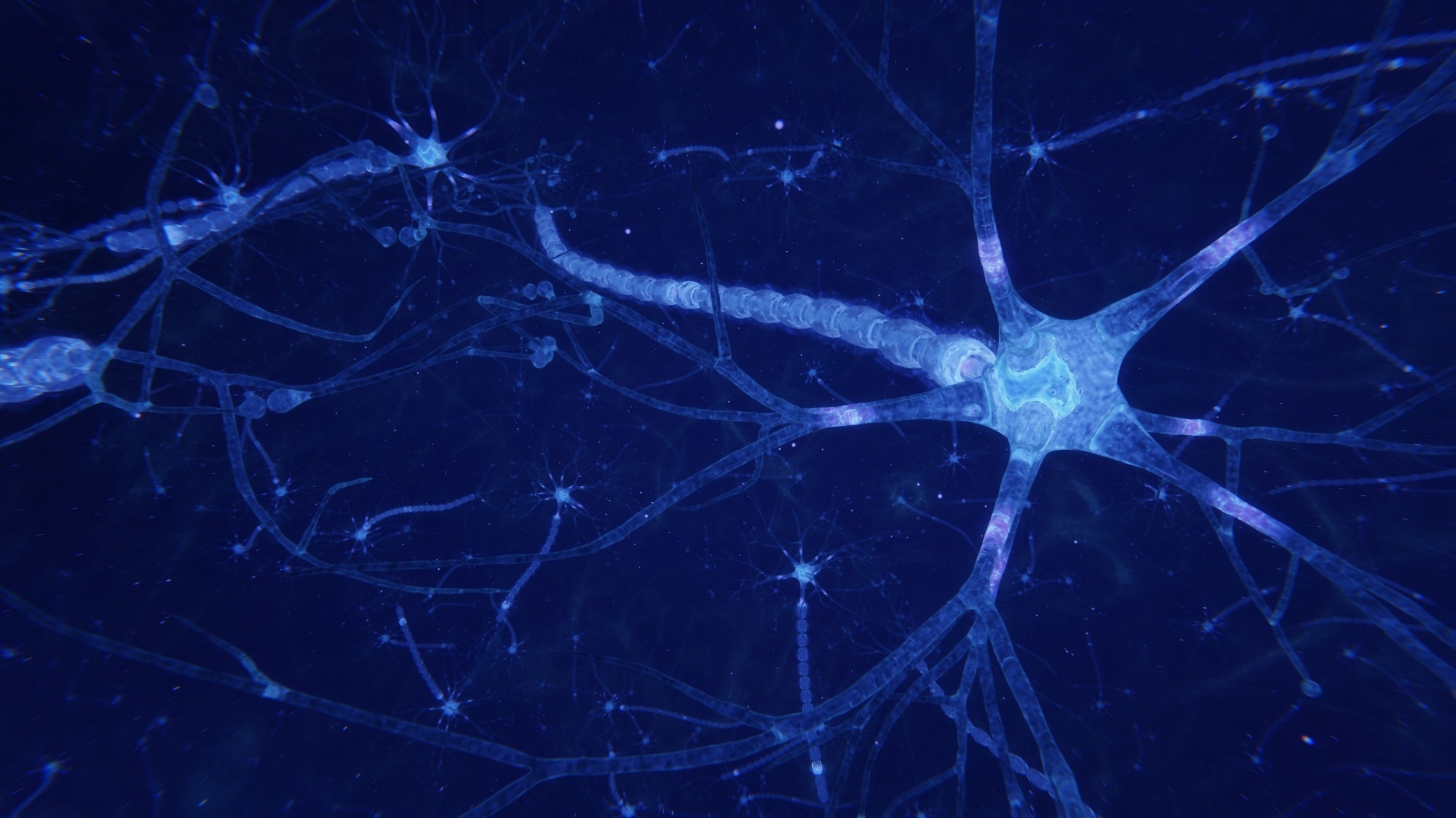Study explores the intricate gut-brain-liver connection and its impact on health
https://reurl.cc/j37GOM
By Pooja Toshniwal PahariaDec 10 2023Reviewed by Benedette Cuffari, M.Sc.
In a recent study published in the journal Signal Transduction and Targeted Therapy, researchers review existing data on the gut-brain-liver axis in health and disease.
 Study: Gut liver brain axis in diseases: the implications for therapeutic interventions. Image Credit: Svitlana Pavliuk / Shutterstock.com Study: Gut liver brain axis in diseases: the implications for therapeutic interventions. Image Credit: Svitlana Pavliuk / Shutterstock.com
What is the gut-brain-liver axis?
The axis connecting the gut, brain, and liver, which is otherwise known as the gut-brain-liver axis, is a three-way interaction that has recently garnered increasing scientific interest. Over the last two decades, researchers have achieved significant progress in exploring gut-brain-liver communication by better understanding its development process and expanding therapeutic options. Interventions based on the gut-brain-liver connection could facilitate personalized treatment.
Mechanisms linking the gut and liver
Communication between the liver and gastrointestinal tract involves a complex network of interconnected pathways that play a critical role in a variety of diseases, including chronic-type hepatitis B virus (HBV), HCV, non-alcoholic fatty liver disease (NAFLD), alcoholic liver disease (ALD), and hepatocellular carcinoma (HCC).
Gut dysbiosis contributes to the advancement of liver disease by increasing pathogen counts and their metabolites, such as lipopolysaccharide (LPS), to destroy tight junctions (TJs) and alter gut permeability. This condition also affects the formation of short-chain fatty acids (SCFAs), fasting-induced adipose factor (FIAF), intestinal ethanol, and choline, as well as the metabolism of BAs. In conjunction with dietary lipid molecules, these variables and metabolites contribute to fatty liver disease, inflammation, and HCC.
The gut microbiome controls the liver-gut axis, with metabolites like LPS and pathogen-associated molecular patterns (PAMP) binding to toll-like receptors (TLRs) on intestinal epithelial cell membranes. This stimulates nuclear factor kappa B (NF-B) nuclear translocation and cytokine production.
Gut dysbiosis decreases FIAF secretion, thereby increasing endogenous alcohol synthesis and allowing ethanol and endotoxins to enter the liver directly. This health condition also suppresses SCFA production, thus prompting neuroendocrine cells to produce peptide YY (PYY) and glucagon-like peptide 1 (GLP-1).
Endotoxins produced by gut bacteria increase immune cell production of inflammatory substances. In the axis connecting the gut and liver, cytokines regulate intestinal permeability, whereas the Farnesoid X receptor (FXR) regulates BA production and transport.
 SLAS EU - Highlights from 2022 eBook Compilation of the top interviews, articles, and news in the last year.Download the latest edition SLAS EU - Highlights from 2022 eBook Compilation of the top interviews, articles, and news in the last year.Download the latest edition
BAs are formed in hepatocytes by the oxidation of cholesterol by cytochrome P450 enzymes (CYPs) to create cholic acid (CA) and chenodeoxycholic acid (CDCA). These acids conjugate taurine or glycine to form conjugated BAs and are released from the liver to the gallbladder and subsequently into the gut.
Brain-liver communication
Inter-organ communication occurs through neurological and circulatory system signals, with the brain-liver axis primarily including blood-brain barrier (BBB) permeability, vagus nerve, epigenetic control, toxic metabolites, β-amyloid (A) metabolism, and immunological response. Tumor necrosis factor (TNF) and interleukin-1 (IL-1) proinflammatory cytokines in the liver induce indiscriminate admission of toxins such as ammonia and xenobiotics, thus resulting in a proinflammatory response.
Changes in BBB permeability can stimulate the hypothalamic-pituitary-adrenal (HPA) axis, which ultimately leads to cortisol production. Stress disturbs HPA regulation, which impacts brain-gut communication, particularly in irritable bowel syndrome (IBS).
The vagus nerve, a bidirectional highway linking the brain and the stomach, is inherently related to the enteric nervous system (ENS) and can affect brain functions such as anxiety, stress reactivity, depression, and social behavior. This nerve sends signals from the gut to the central nervous system (CNS) and can detect microbial transmission from the CNS.
Moreover, neurotransmitters such as gamma-aminobutyric acid (GABA), glutamate, acetylcholine, dopamine, norepinephrine, and trace amines can be synthesized and modulated by the gut microbiota.
Therapies targeting the gut-brain-liver axis
Antibiotics, especially non-absorbable antibiotics, are crucial in managing the intestinal microbiota and influencing the evolution of gut-brain-liver axis diseases. For example, rifaximin, a broad-spectrum antibiotic, is efficacious in biopsy-confirmed NAFLD.
Probiotics containing Lactobacilli, Streptococci, and Bifidobacteria can also help prevent the development of liver and brain disorders such as NAFLD, non-alcoholic steatohepatitis (NASH), autism spectrum disorder (ASD), depression, Parkinson's disease (PD), schizophrenia, epilepsy, and migraines. Leptin, a probiotic molecule, influences gut bacteria and the vagus nerve, thus indicating its vital role in liver and brain function.
Prebiotics increase bacterial metabolites, enhance the development of Bifidobacteria and Lactobacilli, reduce luminal pH, and limit pathogen growth in liver disease, anxiety, and depression. Furthermore, synbiotics, a mix of prebiotics and probiotics, have been shown to benefit a variety of gut-brain-liver axis-related disorders.
Fecal microbiota transplantation (FMT) is a revolutionary treatment that involves transplanting gut bacteria from a healthy donor to a patient. FMT heals dysbiosis in the gastrointestinal tract and reduces inflammation caused by the LPS-TLR4 signaling pathway in the gut and brain.
Polyphenols, which are plant-derived components, are digested in the colon by intestinal bacteria and improve metabolic-related disorders such as type 2 diabetes, NASH, NAFLD, and aging. Cranberry extract improves metabolic syndrome by reversing gut flora changes caused by high-fat and high-sugar diets. Isoflavone, lignans, and their metabolites generated from intestinal bacteria can penetrate the intestinal barrier and BBB and inhibit neuroinflammatory stimulation.
Conclusions
The current review highlights the mechanisms underlying the gut-brain-liver connection. Antibiotics, particularly those that are non-absorbable, regulate the intestinal microbiota and affect gut-brain-liver axis diseases. Rifaximin and solithromycin treat NAFLD and NASH, while probiotics such as Lactobacilli, Streptococci, and Bifidobacteria improve liver- and brain-related dysfunction.
Further research on gut-brain-liver axis interactions could facilitate the development and clinical translation of gut-microbiota-based treatments to improve the standard of care of those with brain or liver disease.
Journal reference:
- Yan, M., Man, S., Sun, B., et al. (2023). Gut liver brain axis in diseases: the implications for therapeutic interventions. Signal Transduction and Targeted Therapy 8;443. doi:10.1038/s41392-023-01673-4
|